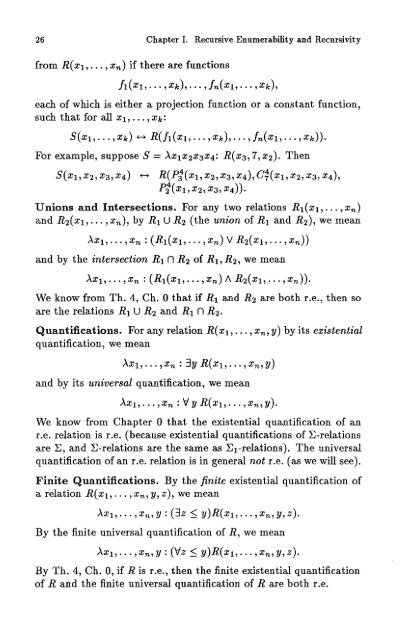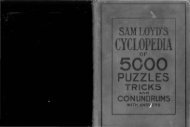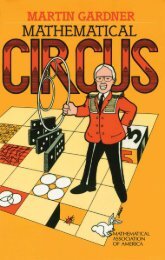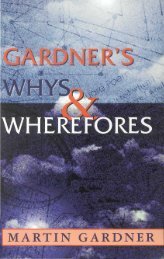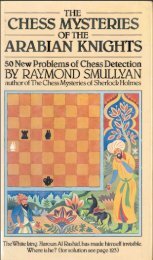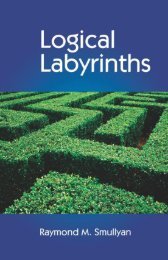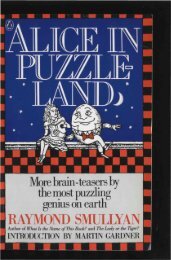Double Recursion Theorems
Double Recursion Theorems
Double Recursion Theorems
- No tags were found...
You also want an ePaper? Increase the reach of your titles
YUMPU automatically turns print PDFs into web optimized ePapers that Google loves.
26 Chapter I. Recursive Enumerability and Recursivityfrom R(XI, ..., x n ) if there are functionseach of which is either a projection function or a constant function,such that for all xi,...,Xk'For example, suppose S = \x\x^xzx^: $(2:3,7, £2)- ThenUnions and Intersections. For any two relations R\(XI, ... ,a; n )and R?(XI, • • • 5 x n)i by R\ U R% (the union of R\ and R^), we meanand by the intersection R\ n R? of Ri,R%, we meanWe know from Th. 4, Ch. 0 that if R\ and R% are both r.e., then soare the relations R\ U R^ and R\ n R%.Quantifications. For any relation R(XI ,..., a; n , y) by its existentialquantification, we meanand by its universal quantification, we meanWe know from Chapter 0 that the existential quantification of anr.e. relation is r.e. (because existential quantifications of S-relationsare S, and S-relations are the same as EI-relations). The universalquantification of an r.e. relation is in general not r.e. (as we will see).Finite Quantifications. By the finite existential quantification ofa relation R(x\,..., x n , y, z), we meanBy the finite universal quantification of J?, we meanBy Th. 4, Ch. 0, if R is r.e., then the finite existential quantificationof R and the finite universal quantification of R are both r.e.


